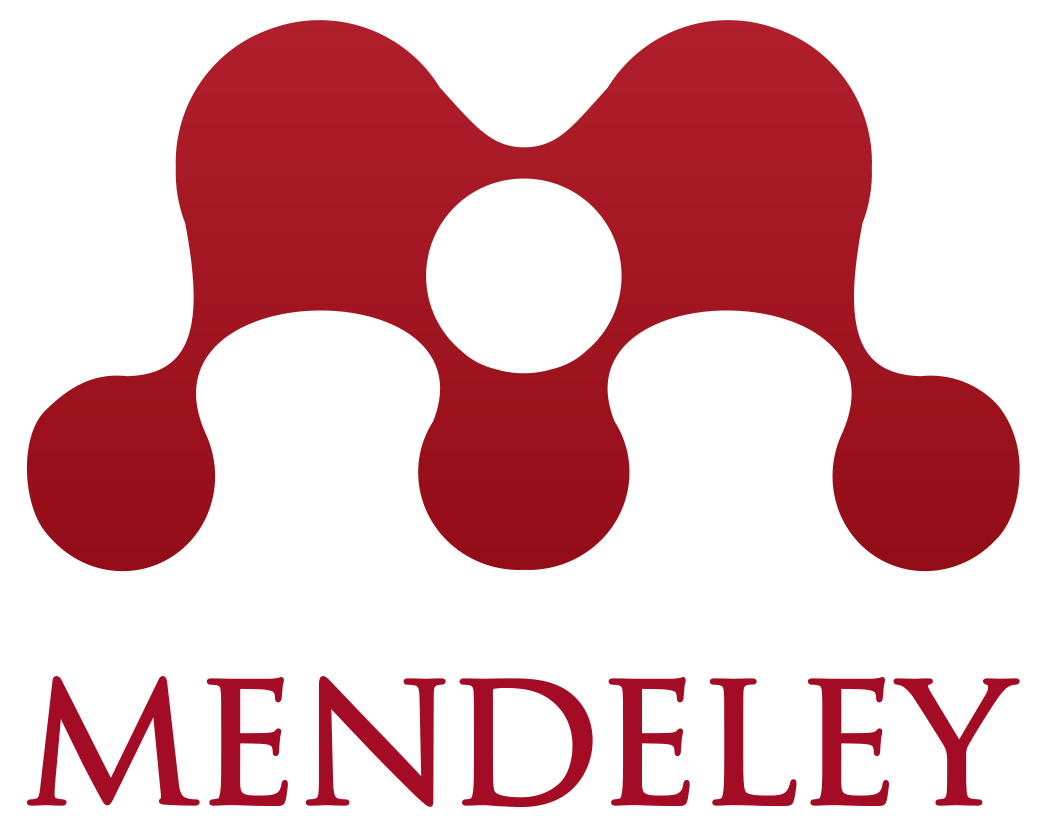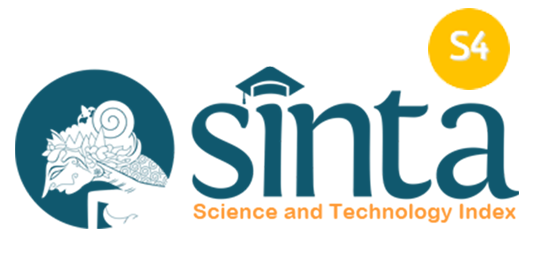Validitas & Praktikalitas: Modul Kibas Asah (Kimia Berbasis Lahan Basah) Terintegrasi AR-Sparkol Pada Materi Larutan Penyangga sebagai Media Pembelajaran Inovatif
Abstract
Validitas dan kepraktisan suatu produk merupakan bagian terpenting dari penelitian pengembangan, terlebih karena kajian yang dibawa bersentuhan dengan kearifan lokal sehingga penting untuk dilakukan. Penelitian ini merupakan R&D (Research & Development). Tujuan penelitian yakni untuk mengetahui validitas dan kepraktisan modul pembelajaran kimia yang dikembangkan. Metode penelitian yang digunakan yakni penelitian pengembangan dengan model Plomp. Teknik pengumpulan data yang dilakukan yakni angket (lembar validasi dan kepraktisan produk). Teknik analisis data yang digunakan yakni Descriptive Statistics Approach. Hasil penelitian menunjukkan bahwa pengembangan modul dinyatakan valid (3,45) dan kepraktisan ditunjukkan dari kemampuan guru mengelola pembelajaran dengan rata-rata 92,89 pada kriteria “sangat tinggi”, serta rata-rata angket respon siswa sebesar 39,90 pada kategori “baik”. Hasil tersebut menunjukkan bahwa modul ajar yang dikembangkan telah memenuhi kriteri sehingga produk ini dinyatakan layak untuk diimplementasi pada pembelajaran kimia. Kesimpulannya bahwa, modul kimia berbasis lahan basah dengan teknologi Augmented Reality (AR)-Sparkol bisa menjadi media pembelajaran kimia yang inovatif agar siswa memahami materi kimia secara nyata, efektif, dan ilmiah.
The validity and practicality are the most important part of development research, mainly because the studies carried out are in contact with local wisdom, so it is essential to do this. This research is R&D (Research & Development). The purpose of the study was to determine the validity and practicality of the chemistry learning module developed. The research method used is development research with the Plomp model. The data collection technique used is a questionnaire (validation sheet and product practicality). The data analysis technique used is the Descriptive Statistics Approach. The results showed that the module development was declared valid (3.45), and practicality was shown from the teacher's ability to manage learning with an average of 92.89 on the "very high" criteria and the average student questionnaire response was 39.90 in the "good" category. " These results indicate that the developed teaching module has met the criteria so that this product is declared feasible to be implemented in chemistry learning. The conclusion is that the wetland-based chemistry module with Augmented Reality (AR)-Sparkol technology can be innovative chemistry learning media to understand chemistry in a real, effective, and scientific way.
Keywords
Full Text:
PDFReferences
Aksela, M. (2005). Supporting meaningful chemistry learning and higher-order thinking through computer-assisted inquiry : A design research approach. In University of Helsinki.
Al-Balushi, S. M. (2013). The effect of different textual narrations on students’ explanations at the submicroscopic level in chemistry. Eurasia Journal of Mathematics, Science and Technology Education, 9(1), 3–10. https://doi.org/10.12973/eurasia.2013.911a
Alkhattabi, M. (2017). Augmented reality as e-learning tool in primary schools’ education: Barriers to teachers’ adoption. International Journal of Emerging Technologies in Learning, 12(2), 91–100. https://doi.org/10.3991/ijet. v12i02.6158
Avcı, F., Şeşen, B. A., & Kırbaşlar, F. G. (2014). Determination of seventh grade students’ understanding of certain chemistry concepts. Procedia - Social and Behavioral Sciences, 152, 602–606. https://doi.org/10.1016/j.sbspro.2014.09.250
Barke, H. D., Hazari, A., & Yitbarek, S. (2009). Misconceptions in Chemistry (addresing perceptions in chemical education). https://doi.org/10.1007/978-3-540-70989-3_2
Barke, H., Harsch, G., & Schmid, S. (2012). Essentials of chemical education. https://doi.org/10.1017/CBO9781107415324.004
Behmke, D., Kerven, D., Lutz, R., Paredes, J., Pennington, R., Brannock, E., … Stevens, K. (2018). Augmented reality chemistry: Transforming 2-D molecular representations into interactive 3-d structures. Proceedings of the Interdisciplinary STEM Teaching and Learning Conference, 2(1), 3–11. https://doi.org/10.20429/stem.2018.020103
Berkel, Berry, V., Pilot, A., & Bulte, Astrid, M, W. (2009). Micro-macro thinking in chemical education: Why and how to escape. In D. F. Gilbert, John. K., & Treagust (Ed.), Multiple Representations in Chemical Education, MOdels and Modeling in Science Education. https://doi.org/10.1007/978-1-4020-8872-8_3
Budiningsih, C. A. (2009). Moral dilemma model and contemplation with cooperative learning strategy. Jurnal Penelitian Dan Evaluasi Pendidikan, 12(01), 57–75.
Bybee, R. W., & Fuchs, B. (2009). Preparing the 21 century workface: A new reform in science and technology education. Journal of Research in Science Teaching, 43(4), 349–352. https://doi.org/10.1002/tea
Canelas, D. A., Hill, J. L., & Novicki, A. (2017). Cooperative learning in organic chemistry increases student assessment of learning gains in key transferable skills. Chemistry Education Research and Practice, 18(3), 441–456. https://doi.org/10.1039/c7rp00014f
Chen, X., de Goes, L. F., Treagust, D. F., & Eilks, I. (2019). An analysis of the visual representation of redox reactions in secondary chemistry textbooks from different chinese communities. Education Sciences, Vol. 9. https://doi.org/10.3390/educsci9010042
Darmiyanti, W., Rahmawati, Y., Kurniadewi, F., & Ridwan, A. (2017). Analisis model mental siswa dalam penerapan model pembelajaran learning cycle 8e pada materi hidrolisis garam. JRPK: Jurnal Riset Pendidikan Kimia, 7(1), 38–51. https://doi.org/10.21009/jrpk.071.06
Durmaz, M. (2018). Determination of prospective chemistry teachers’ cognitive structures and misconceptions about stereochemistry. Journal of Education and Training Studies, 6(9), 13. https://doi.org/10.11114/jets.v6i9.3353
Fjeld, M., Fredriksson, J., Ejdestig, M., Duca, F., Bötschi, K., Voegtli, B., & Juchli, P. (2007). Tangible user interface for chemistry education: Comparative evaluation and re-design. Conference on Human Factors in Computing Systems - Proceedings, (May 2014), 805–808. https://doi.org/10.1145/1240624.1240745
Gilbert, J. K., & Treagust, D. F. (2009). Introduction: Macro, Submicro and symbolic representations and the relationship between them: Key models in chemical education. In Multiple Representations in Chemical Education, MOdels and Modeling in Science Education (pp. 1–8). https://doi.org/10.1007/978-1-4020-8872-8_1
Halim, N. D. A., Ali, M. B., Yahaya, N., & Said, M. N. H. M. (2013). Mental model in learning chemical bonding: A preliminary study. Procedia - Social and Behavioral Sciences, 97(August), 224–228. https://doi.org/10.1016/j.sbspro.2013.10.226
Harris, J., Mishra, P., & Koehler, M. (2009). Teachers’ technological pedagogical content knowledge and learning activity types: Curriculum-based technology integration refrained. Journal of Research on Technology in Education, 41(4), 393–416. https://doi.org/10.1080/15391523.2009.10782536
Herdini, H., Linda, R., Abdullah, A., Shafiani, N., Darmizah, F. ‘Alaina, & Dishadewi, P. (2018). Development of interactive multimedia based on Lectora Inspire in chemistry subject in junior high school or madrasah tsanawiyah. Journal of Educational Sciences, 2(1), 46. https://doi.org/10.31258/jes.2.1.p.46-55
Hobri. (2009). Metodologi penelitian pendidikan (Development Research). Jember: Pusat Perbukuan Departemen Nasional.
Ibáñez, M. B., & Delgado-Kloos, C. (2018). Augmented reality for STEM learning: A systematic review. Computers and Education, 123, 109–123. https://doi.org/10.1016/j.compedu.2018.05.002
Irwansyah, F. S., Yusuf, Y. M., Farida, I., & Ramdhani, M. A. (2018). Augmented Reality (AR) technology on the android operating system in chemistry learning. IOP Conference Series: Materials Science and Engineering, 288(1). https://doi.org/10.1088/1757-899X/288/1/012068
Korniawati, A., Kusumo, E., & Susilaningsih, E. (2016). Validitas chemistry handout sebagai inovasi bahan ajar stoikiometri berstrategi pbs bervisi sets. Jurnal Inovasi Pendidikan Kimia, 10(1), 1629–1640.
Koutromanos, G., Sofos, A., & Avraamidou, L. (2015). The use of augmented reality games in education: a review of the literature. Educational Media International, 52(4), 253–271. https://doi.org/10.1080/09523987.2015.1125988
Lubis, I. R., & Ikhsan, J. (2015). Pengembangan media pembelajaran kimia berbasis android untuk meningkatkan motivasi belajar dan prestasi kognitif peserta didik sma. Jurnal Inovasi Pendidikan IPA, 1(2), 191. https://doi.org/10.21831/jipi.v1i2.7504
Lund, B., Harald, & Håkon. (2016). Nordina : Nordic studies in science education. Nordic Studies in Science Education, 12(2), 157–174. Retrieved from https://www.journals.uio.no/index.php/nordina/article/view/2399/3336
Mahardika, E., Ridwan, A., & Rahmawati, Y. (2018). Metode Flowmap dalam materi asam basa menggunakan model learning cycle 8e. Educhemia (Jurnal Kimia Dan Pendidikan), 3(1), 51–65. Retrieved from http://jurnal.untirta.ac.id/index.php/EduChemia/article/view/1849/2915
Majid, A., & Prahani, B. K. (2017). Analyze of students ’ learning outcomes based on mental models of atomic structure. Journal of Research & Method in Education, 7(1), 120–124. https://doi.org/10.9790/7388-070101120124
Mezirow, J. (1991). Tranformative dimensions of adult learning. San Francisco: Jossey-Bass.
Mustaqim, I., & Kurniawan, N. (2018). Pengembangan media pembelajaran pai berbasis augmented reality. Lentera Pendidikan : Jurnal Ilmu Tarbiyah Dan Keguruan, 21(1), 59–72. https://doi.org/10.24252/lp.2018v21n1i6
Normalasarie, & Aulia, S. (2019). Pengembangan media pembelajaran ilmu sosial budaya berbasis kearifan lokal (kain sasirangan khas kalimantan). Elementa: Jurnal Prodi Pgsd Stkip Pgri Banjarmasin, 1(1), 61–70.
Pande, P., & Chandrasekharan, S. (2017). Representational competence: towards a distributed and embodied cognition account. Studies in Science Education, 53(1), 1–43. https://doi.org/10.1080/03057267.2017.1248627
Priyambodo, E. (2014). The effect of multimedia based learning (MBL) in chemistry teaching and learning on students ’ self- regulated learning (SRL). Journal of Education and Learning, 8(4), 363–367.
Priyambodo, E., & Wulaningrum, S. (2017). Using chemistry teaching aids based local wisdom as an alternative media for chemistry teaching and learning. International Journal of Evaluation and Research in Education (IJERE), 6(4), 295–298. https://doi.org/10.11591/ijere.v6i4.10772
Rahmawati, Y., Jakarta, U. N., & Sastrapraja, A. R. (2017). Empowering students ’ chemistry learning : The integration of ethnochemistry in culturally responsive teaching. Chemistry: Bulgarian Journal of Science Education, 26(813–830).
Redó, M. N., Torres, A. Q., Quirós, R., Redó, I. N., Castelló, J. B. C., & Camahort, E. (2010). New augmented reality applications: Inorganic chemistry education. Teaching through Multi-User Virtual Environments: Applying Dynamic Elements to the Modern Classroom, 365–386. https://doi.org/10.4018/978-1-61692-822-3.ch020
Rui, R., Lim, X., Ang, A. S., Fung, F. M., Kong, L., Wing, C., & Road, K. R. (2017). Application of social media in chemistry education : Incorporating instagram and snapchat in laboratory teaching. ACS Symposium Series, 193–195.
Santos, V. C., & Arroio, A. (2016). The representational levels: Influences and contributions to research in chemical education. Journal of Turkish Science Education, 13(1), 3–18. https://doi.org/10.12973/tused.10153a
Shortall, O., Green, M., Brennan, M., Wapenaar, W., & Kaler, J. (2017). Exploring expert opinion on the practicality and effectiveness of biosecurity measures on dairy farms in the United Kingdom using choice modeling. Journal of Dairy Science, 100(3), 2225–2239. https://doi.org/10.3168/jds.2016-11435
Shui-Te, L., Kusuma, I. W., Wardani, S., & Harjito. (2018). Hasil identifikasi miskonsepsi siswa ditinjau dari aspek makroskopis, mikroskopis, dan simbolik (mms) pada pokok bahasan partikulat sifat materi di taiwan. Jurnal Inovasi Pendidikan Kimia, 12(1).
Singhal, S., Bagga, S., Goyal, P., & Saxena, V. (2012). Augmented chemistry: interactive education system. International Journal of Computer Applications, 49(15), 1–5. https://doi.org/10.5120/7700-1041
Subramaniam, N. K., & Kandasamy, M. (2014). Mastering new information through facebook and a discussion forum: A comparative analysis. Asian Association of Open Universities Journal, 9(1), 1–15. https://doi.org/10.1108/aaouj-09-01-2014-b002
Sufidin, U., Kadaritna, N., & Rudibyani, R. B. (2017). Pengembangan media animasi berbasis representasi kimia pada materi sifat-sifat koloid. Jurnal Pendidikan Dan Pembelajaran Kimia, 6(3), 400–413.
Sunyono, S. (2018). Mental models of atomic structure concepts of 11th grade chemistry students. Asia-Pacific Forum on Science Learning and Teaching, 19(1), 1–21.
Supatmi, S., Setiawan, A., Rahmawati, Y., Education, C., Program, S., & Jakarta, U. N. (2019). Students ’ misconceptions of acid -base titration assessments using a two - tier multiple-choice. 9(January), 18–37.
Supriono, N., & Rozi, F. (2018). Pengembangan media pembelajaran bentuk molekul kimia menggunakan augmented reality berbasis android. JIPI (Jurnal Ilmiah Penelitian Dan Pembelajaran Informatika), 3(1), 53–61. https://doi.org/10.29100/jipi.v3i1.652
Susanto, J. (2012). Pengembangan Perangkat pembelajaran berbasis lesson study dengan kooperatif tipe numbered heads together untuk meningkatkan aktivitas dan hasil belajar ipa di sd. Journal of Primary Education, 1(2), 71–77. https://doi.org/10.15294/jpe.v1i2.785
Taçgin, Z., Uluçay, N., & Özüağ, E. (2016). Designing and developing an augmented reality application: a sample of chemistry education. Turkiye Kimya Dernegi Dergisi Kisim C: Kimya Egitimi, 1(1), 147–164.
Taddio, A., Hogan, M. E., Moyer, P., Girgis, A., Gerges, S., Wang, L., & Ipp, M. (2011). Evaluation of the reliability, validity and practicality of 3 measures of acute pain in infants undergoing immunization injections. Vaccine, 29(7), 1390–1394. https://doi.org/10.1016/j.vaccine.2010.12.051
Treagust, D. F., Chittleborough, G., & Mamiala, T. L. (2003). The role of submicroscopic and symbolic representations in chemical explanations. International Journal of Science Education, 25(11), 1353–1368. https://doi.org/10.1080/0950069032000070306
Uno, H. (2012). Orientasi Baru Dalam Psikologi Pembelajaran. Jakarta: Bumi AKsara.
Wahid, A., & Anra, H. (2017). Cross platform aplikasi augmented reality untuk mata pelajaran kimia struktur molekul. Jurnal Sistem Dan Teknologi Informasi, 5(3), 1–5.
Williams, D. P. (2018). Measuring the effectiveness of an open ended team-based induction task. New Directions in the Teaching of Physical Sciences, 13(13), 1–7. https://doi.org/10.29311/ndtps.v0i13.2680
Yuanita, L., & Ibrahim, M. (2015). Mental model of students on stoichiometry concept in learning by method based on multiple representation. The Online Journal of New Horizon in Education, 5(2), 30–45. Retrieved from http://www.tojned.net/volume.php?volume=5&issue=2
Zulkifli, M. (2013). Model of learning information and communication technology based; study of learning islamic educationat senior high school 4 kendari. IOSR Journal of Research & Method in Education (IOSRJRME), 3(1), 24–27. https://doi.org/10.9790/7388-0312427
DOI: https://doi.org/10.20527/jmscedu.v1i1.3398
Refbacks
- There are currently no refbacks.

This work is licensed under a Creative Commons Attribution 4.0 International License.

Journal Of Mathematics Science and Computer Education is licensed under a Creative Commons Attribution-ShareAlike 4.0 International License.









.jpg)
1.png)

